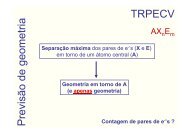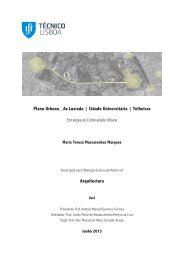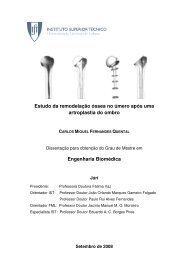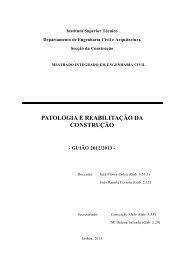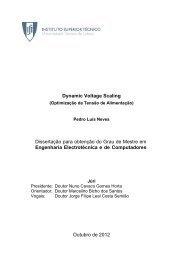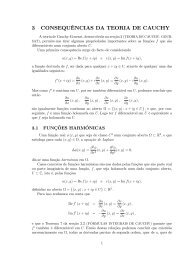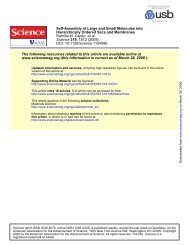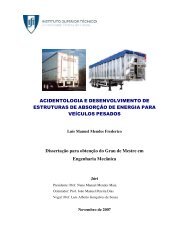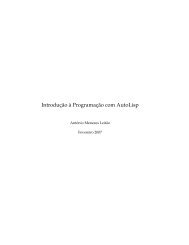dissertacao.pdf
dissertacao.pdf
dissertacao.pdf
Create successful ePaper yourself
Turn your PDF publications into a flip-book with our unique Google optimized e-Paper software.
1.5.5 Continued Fractions<br />
The continued fraction expansion of a real number x is its representation as the<br />
tuple [a0; a1, ..., an, · · · ], such that the following equality is satisfied:<br />
1<br />
x = a0 +<br />
1<br />
a1 +<br />
1<br />
a2 +<br />
. .. +<br />
1<br />
an + 1<br />
. ..<br />
with the coefficient a0 being any integer and the coefficients a1, · · · , an, · · · pos-<br />
itive integers. If x = p<br />
q<br />
is a rational number then the number of coefficients in<br />
its continued fraction expansion is finite, namely n = log(q). This coefficients<br />
are the quotients computed by the Euclidean Algorithm applied to p and q.<br />
The value ci = [a0; a1 · · · ai, for i = 0, ..., n, called the i-th convergent of<br />
x, can be seen as an approximation of the value of x = [a0; a1, · · · , an].<br />
We now present one result about continued fractions which is the basis for<br />
Wiener’s attack, presented in Chapter 3.<br />
Theorem 4. Let α ∈ Q and c, d ∈ Z such that:<br />
|α − c 1<br />
| < .<br />
d 2d2 Then c<br />
d , as an irreducible fraction, is one of the convergents of the continued<br />
fraction expansion of α.<br />
1.5.6 Results from Coppersmith<br />
In an article written in 1997[9], Coppersmith shows how to solve a modular<br />
polynomial equation of degree k in a single variable x, as long as the solutions are<br />
sufficiently small. The work of Coppersmith is based in the theory of Lattices,<br />
namely in one algorithm developed by Lenstra, Lenstra and Lovasz, the LLL-<br />
algorithm[26].<br />
Theorem 5. Let p(x) be a monic integer polynomial of degree k and N a<br />
positive integer of unknown factorization. We can find all integer solutions x0<br />
of p(x0) ∼ = 0 (mod N), such that |x0| < N 1<br />
k , in time polynomial in log(N) and<br />
k.<br />
12



